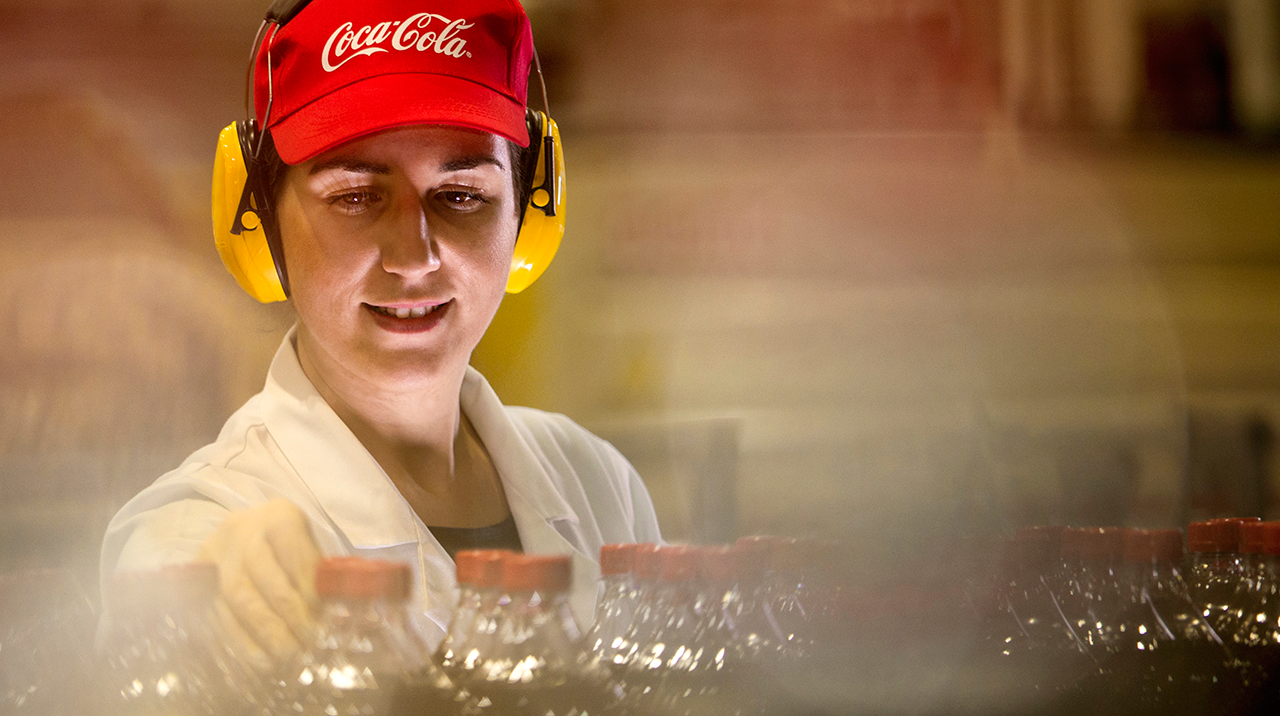We adapt our operations to the needs and opportunities of a low carbon emissions economy. We invest in and take major initiatives to address the environmental challenges by reducing energy consumption and carbon emissions that are produced by our operations.
Our efforts are focused on:
- reducing energy consumption in our plants and refrigerators we provide to the market
- assessing our suppliers concerning environmental compliance (i.e. ISO14000 certified, procurement of vehicles with energy criteria, highly energy efficient refrigerators and coolants that are not environmentally harmful)
- optimizing transport operations by increasing the number of trucks with larger payload to reduce the number of transport routes
Saving energy in our production plants
A significant proportion of our energy consumption is produced by our production plants. Gaseous pollutants (except carbon dioxide) mainly come from steam generators and steam boilers that are required for the plants’ operation. We are constantly assessing the energy efficiency of our plants and aim at optimizing our production processes, by reducing energy consumption and greenhouse gas emissions, respectively. Here are some of our energy saving initiatives in our plants:
- We conduct measurements to control gaseous pollutants (such as soot and carbon monoxide) in all our plants.
- We implement our Group's Key Energy Saving Practices in all our plants by over 70%.
- We identify, report and immediately repair any losses in closed circuits.
- We have replaced 80% of our lights with LED lamps in our plants
- We replaced more than 100% of our LPG forklift trucks with electric ones[AP3]
- We also have some LPG as additional trucks for the periods when electric ones are inadequate
100% of electric power supply in our production plants comes from Renewable Energy Sources.
At strategic level, where it is feasible and affordable, the company uses more environment-friendly energy sources with lower greenhouse gas emissions. For example, in Schimatari, natural gas is used to cover the plant's energy needs.
Energy consumption in our production plants (TJ): |
||||||
|
2019 |
2020 |
2021 |
|||
Total |
229.2 |
199,6 |
221,3 |
|||
Electrical Power |
144.2 |
62.91% |
124.4 |
62.31% |
137.27 |
62.03% |
Natural Gas |
70.4 |
30.72% |
66.3 |
33.22% |
74.41 |
33.63 |
LPG |
8.8 |
3.84% |
6.1 |
3.06% |
6.42 |
2.9% |
Fuel Oil |
5.8 |
2.53% |
2.8 |
1.41% |
3.2 |
1.44% |
|
|
|||||
% consumption from renewable sources of total |
62.91% |
62,31% |
62,03% |
|||
Energy consumption in offices and warehouse (TJ) |
||||||
|
2019 |
2020 |
2021 |
|||
Total (Source: Electricity and LPG for forklift trucks |
15.9 (42% from renewable sources) |
5.9 (44% from renewable sources) |
6.8 (76% from renewable sources) |
|||
*Note that the company does not sell energy that it generates itself
2019 |
2020 |
2021 |
0,354 |
0,379 |
0,352 |




